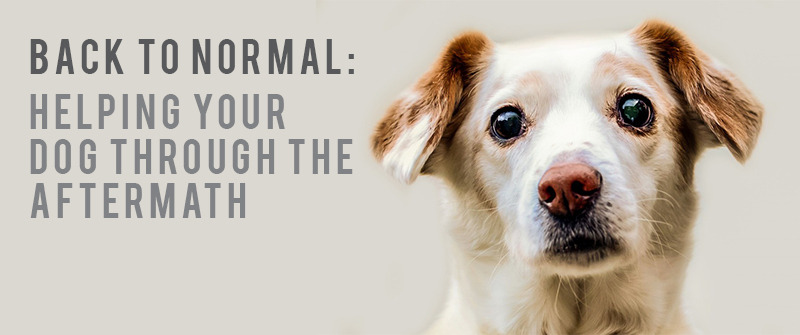
After surviving natural disasters such as tornadoes or other catastrophic events, dogs can experience clinical signs similar to the post-traumatic stress disorders (PTSD) that affect in humans . These experiences can inflict temporary separation anxiety, storm phobias, and noise phobia in your dog.
While some reactions may be more unsettling than others, understanding the signs earlier can help you get them back to normal a little sooner.
Signs Your Dog Is Stressed After a Disaster
Avoidance: Dogs may start showing avoidance after a disaster they may start avoiding people or other dogs. By not making eye contact, hiding, tail tucking, or turning away.
Abnormal panting: Dogs pant to cool themselves off. However, if your dog pants for no noticeable reason with its ears pinned back and low, this could be an indication of stress.
Frequent yawning: As strange as it may seem, frequent yawning combined with other behaviors such as avoidance or pinned ears is attributed to stress.
Destructive behaviors: They may attempt to ease their stress by trying to bite you or other objects. Most dog aggressive behaviors are followed by facial expression, frightening body posture, or submissive behaviors. These signs strongly indicate nervousness and resentment.
Excessive barking: Although barking is normal, excessive barking whether inside or outside the house, can be a sign of anxiety, distress, or apprehension. Identify your dogs barking pattern and know whether it barks when you leave the house of when strangers come to your home. Sometimes the traumatic memories can influence your dog’s reaction.
Helping Your Dog
Identifying the early signs of stress in your dog is the first step towards the right direction. Here are a few ideas you can help him get back to normal.
Spend enough time and play/exercise regularly: Just like children, spending time, and playing fun games with your furry friend can help alleviate stress.
Avoid stressful situations: After a trauma, it’s better to walk your dog in less crowded places.
Create a safe zone: As well as providing you with safety, your dog wants to feel safe too. Set apart a safe zone in your home where he can hide in the event of high stress occurrences such as thunderstorms.
Sometimes, your dog’s just doesn't return to the old normal due to unidentified reasons. Under such circumstances, schedule an appointment with your veterinarian. Consulting with your vet is always one of the first steps to getting your furry friend to his new normal.
Meet The Author
Canine Specialist & Writer
Grant is an award-winning writer for SitStay with a passion for pets and especially dogs! Grant loves writing about furry little goofballs and aims to educate pet parents about anything and everything regarding their dogs.









